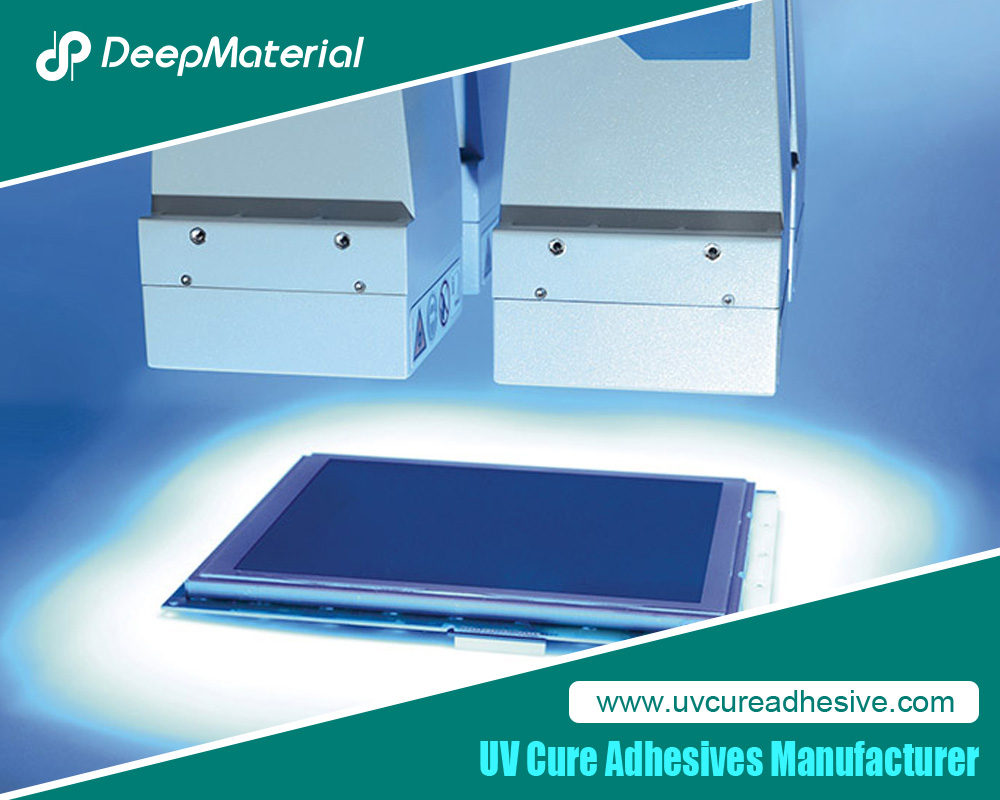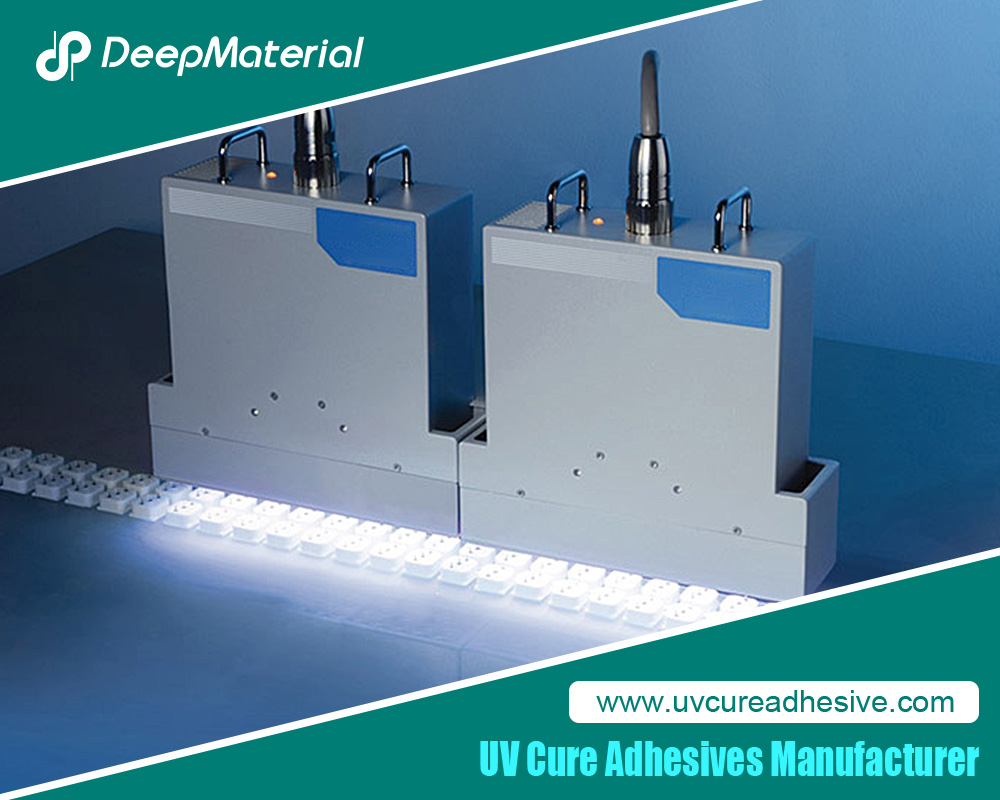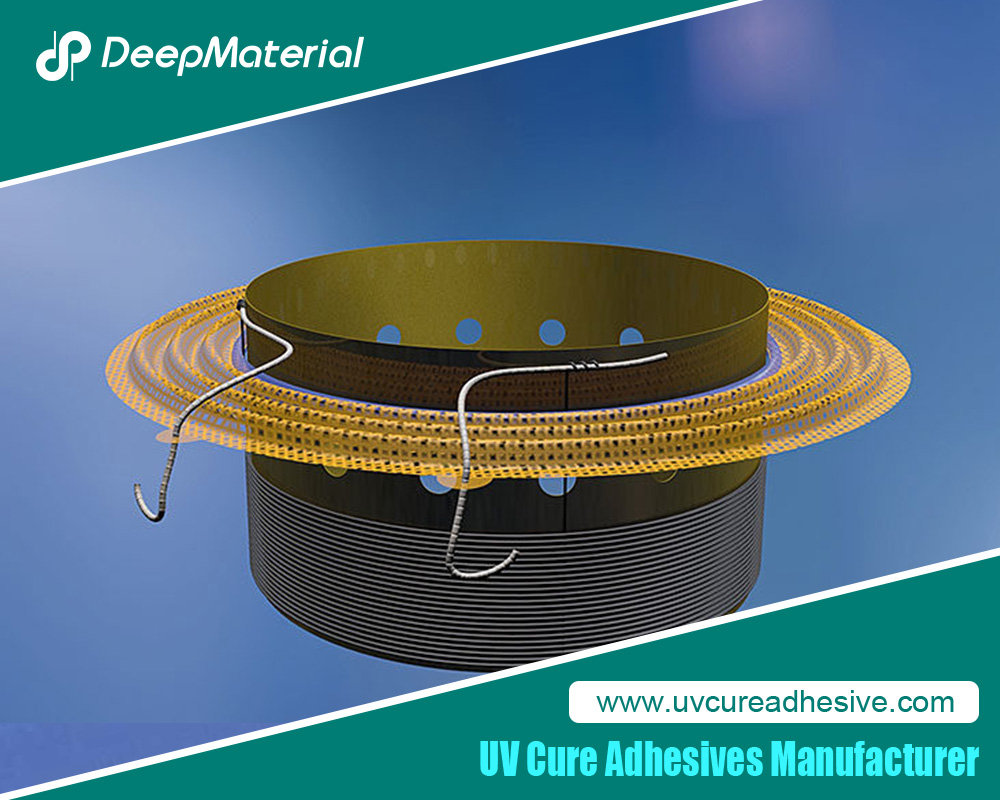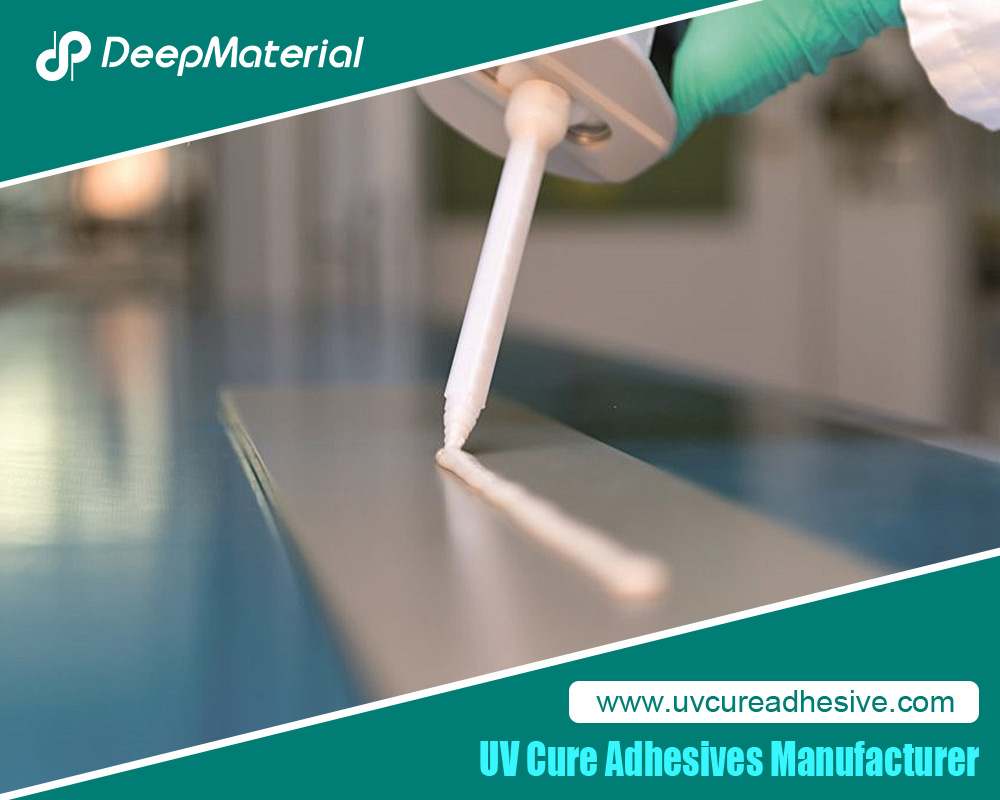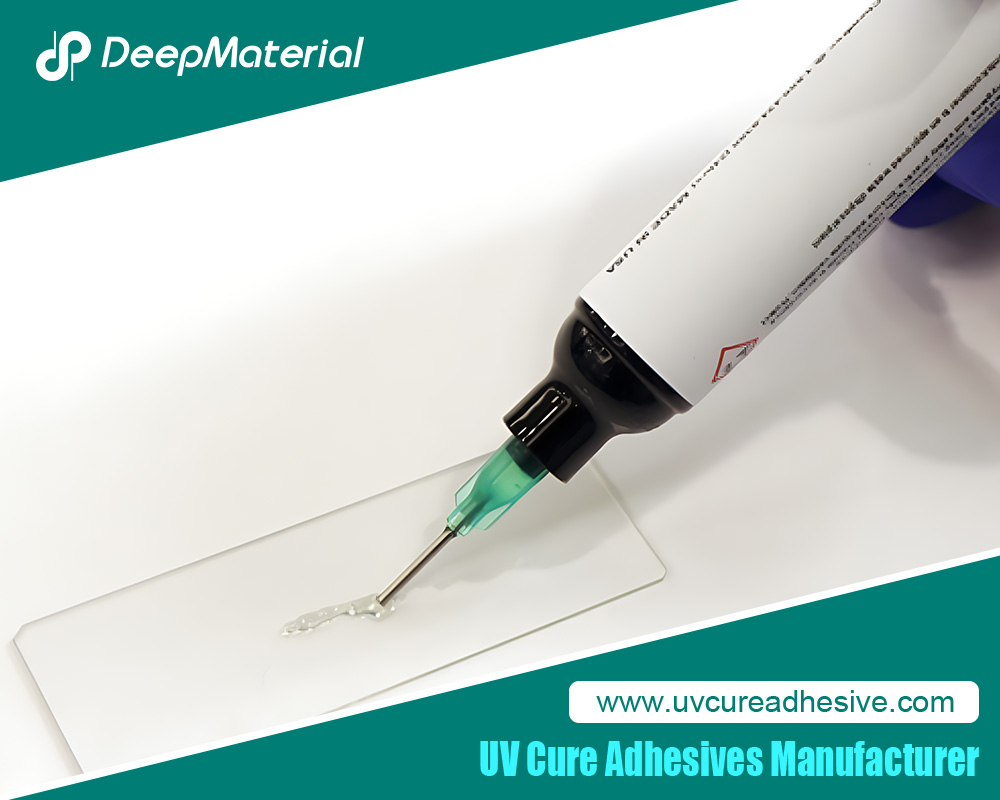Influence Mechanisms of Different Substrates on the Curing Depth and Surface Hardness of UV Glue and Optimization Strategies
UV glue has been widely applied in fields such as electronics, optics, and healthcare due to its advantages of rapid curing and environmental friendliness. However, the interaction between different substrates and UV glue varies significantly, directly affecting the curing process and final properties of the glue. Understanding the influence mechanisms of substrates on the curing depth and surface hardness of UV glue is the key to achieving high-quality bonding.
Influence Mechanisms of Different Substrates on the Curing Depth of UV Glue
1. Glass Substrate
Glass has high light transmittance and chemical stability, but its surface is smooth and lacks active groups. When UV glue is cured on the glass surface, ultraviolet rays can penetrate the glass and the glue layer relatively smoothly, triggering the decomposition of photoinitiators to generate free radicals, thus initiating the polymerization reaction. However, the smoothness of the glass surface results in a limited contact area between the glue and the glass, which may affect the curing efficiency to some extent. In addition, if there are impurities, pollutants, or water films on the glass surface, they will hinder the propagation of ultraviolet rays and reduce the curing depth.
2. Metal Substrate
Metal substrates are generally opaque, and there are oxide films or oil stains on their surfaces. When UV glue is coated on the metal surface, ultraviolet rays can only enter from the surface of the glue, causing the curing process to proceed from the surface to the inside. The oxide film on the metal surface may have a weak chemical reaction with the glue, which has a certain impact on the curing process. Contaminants such as oil stains will prevent the ultraviolet rays from irradiating and the effective contact between the glue and the metal, seriously affecting the curing depth. At the same time, the high thermal conductivity of the metal will quickly take away the heat generated during the curing process, reducing the system temperature, affecting the activity of free radicals and the polymerization reaction rate, and thus reducing the curing depth.
3. Plastic Substrate
There are significant differences among different types of plastic substrates. Some transparent plastics, such as polymethyl methacrylate (PMMA), have high light transmittance and little obstruction to ultraviolet rays, which is beneficial to the curing of UV glue. However, some plastics contain additives (such as plasticizers and flame retardants), and these additives may absorb or scatter ultraviolet rays, reducing the curing depth. In addition, the low polarity of the plastic surface leads to weak adhesion with the glue, which may cause local stress concentration in the glue during the curing process, affecting the uniformity and depth of curing. Opaque plastics completely block ultraviolet rays, and only the surface of the glue can be cured, while the inside is difficult to be completely cured.
Influence Mechanisms of Different Substrates on the Surface Hardness of UV Glue
1. Glass Substrate
The glass surface is flat and has high hardness, providing a stable supporting base for the UV glue. During the curing process, the glue can adhere closely to the glass surface, and the cross-linked network formed after curing is not easy to deform, resulting in a relatively high surface hardness. At the same time, the interaction between the glass and the glue is weak, which will not interfere with the cross-linking reaction inside the glue, helping to form a uniform and dense cured structure and further improving the surface hardness.
2. Metal Substrate
The high hardness and rigidity of the metal also provide a stable support for the UV glue. However, the roughness and chemical composition of the metal surface will affect the bonding force between the glue and the metal. If the metal surface is too rough, the glue will fill the pores, and after curing, inconsistent shrinkage may lead to stress concentration and reduce the surface hardness. In addition, the interfacial reaction between the metal and the glue will also affect the cured structure. If the reaction is too strong or an uneven interfacial layer is formed, it may damage the cross-linked network of the glue and decrease the surface hardness.
3. Plastic Substrate
The flexibility and low hardness of the plastic will affect the surface hardness of the UV glue after curing. Since the plastic substrate is prone to deformation under stress, the cured glue will also undergo a certain degree of deformation, resulting in a decrease in surface hardness. Moreover, the compatibility between the plastic and the glue has an important impact on the surface hardness. If the compatibility between the two is poor, phase separation will occur, destroying the uniform structure of the glue, making the surface hardness uneven and decreasing it.
Strategies to Avoid Incomplete Curing
1. Substrate Pretreatment
- Glass Substrate: Clean the glass surface with solvents such as alcohol and acetone to remove oil stains, dust, and water films. Increase the surface roughness and active groups through plasma treatment or chemical etching to increase the contact area and adhesion between the glue and the glass, and promote the curing.
- Metal Substrate: Use physical methods such as sandblasting and grinding to remove the oxide film and impurities and increase the surface roughness. Use chemical treatment agents (such as chromate treatment and phosphating treatment) to form an active film layer on the metal surface to enhance the bonding force between the glue and the metal. At the same time, use a special metal cleaning agent to remove oil stains to ensure that the ultraviolet rays can effectively irradiate the glue.
- Plastic Substrate: For plastics containing additives, some additives can be removed by baking and other methods. Use flame treatment, corona treatment, or plasma treatment to improve the surface polarity and activity of the plastic, and improve the wettability and curing effect of the glue. For opaque plastics, methods such as single-sided gluing, increasing the irradiation time, or increasing the light intensity can be used to try to make the glue completely cured.
2. Glue Formula Optimization
- Select appropriate photoinitiators, and adjust the type and dosage of photoinitiators according to the characteristics of the substrate and the ultraviolet light source to improve the absorption efficiency of ultraviolet rays and the generation rate of free radicals.
- Optimize the ratio of monomers and prepolymers to improve the reactivity and cross-linking density of the glue and promote the progress of the curing reaction.
- Add appropriate additives, such as leveling agents to improve the wettability of the glue, and defoaming agents to eliminate the influence of bubbles on the curing, and improve the uniformity and depth of curing.
3. Curing Process Adjustment
- Precisely control the wavelength, light intensity, and irradiation time of the ultraviolet light source. According to the characteristics of the glue and the substrate, select the most suitable ultraviolet wavelength. Determine the optimal light intensity and irradiation time through experiments to avoid incomplete curing caused by insufficient irradiation, and at the same time prevent the aging of the glue caused by excessive irradiation.
- Use multi-angle irradiation or rotate the substrate to ensure that all parts of the glue can fully receive ultraviolet irradiation, especially for components with complex shapes.
Strategies to Avoid Internal Stress Cracking
1. Glue Performance Optimization
- Adjust the formula of the glue to reduce the curing shrinkage rate. Select monomers and prepolymers with low shrinkage rates, and add elastomers or toughening agents to improve the flexibility of the glue, so that the glue can buffer the internal stress during the curing process.
- Control the cross-linking density of the glue to avoid excessive cross-linking density, which will make the adhesive layer hard and brittle. Through the reasonable selection of the dosage of cross-linking agents and reaction conditions, the glue can form a moderately cross-linked network structure, taking into account both hardness and flexibility.
2. Substrate Treatment and Matching
- Conduct appropriate pretreatment on the substrate to reduce the surface roughness and defects and reduce the stress concentration points. For example, polish the metal surface and smooth the plastic surface.
- Select a UV glue with a thermal expansion coefficient similar to that of the substrate to reduce the thermal stress caused by temperature changes. When used in different temperature environments, the expansion or contraction degrees of the two are similar, which can effectively reduce the generation of internal stress.
3. Process Control
- Adopt a step-by-step curing process. First, carry out a low-intensity and short-time pre-curing to make the glue initially take shape and release part of the stress. Then, carry out a high-intensity and long-time complete curing to complete the cross-linking reaction.
- Control the dispensing process to avoid excessive glue accumulation or uneven distribution. Reasonably adjust the dispensing amount and dispensing method to ensure that the adhesive layer is uniform and of moderate thickness, and reduce the uneven stress distribution caused by the difference in adhesive layer thickness.
Conclusion
The influence mechanisms of different substrates on the curing depth and surface hardness of UV glue are complex and diverse, involving the optical, physical, and chemical properties of the substrates. Through strategies such as appropriate pretreatment of the substrate, optimization of the glue formula, and adjustment of the curing process, it is possible to effectively avoid problems such as incomplete curing and internal stress cracking, and achieve reliable bonding and high-performance applications of UV glue on different substrates. In the future, with the continuous development of materials science and process technology, the performance of UV glue for multi-substrate applications will be further improved, and the application range will be more extensive.
For more about influence mechanisms of different substrates on the curing depth and surface hardness of UV glue and optimization strategies, you can pay a visit to DeepMaterial at https://www.uvcureadhesive.com/ for more info.

